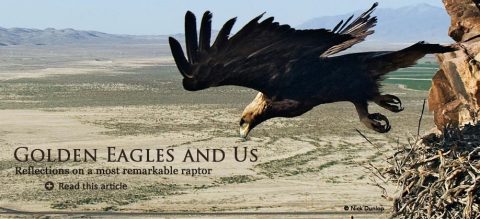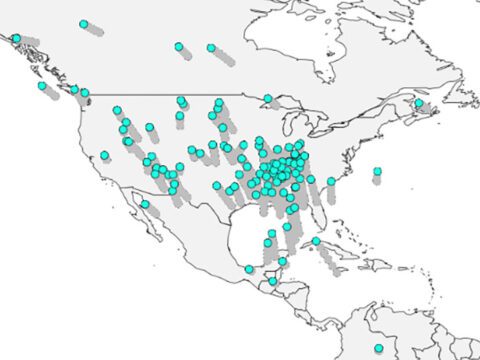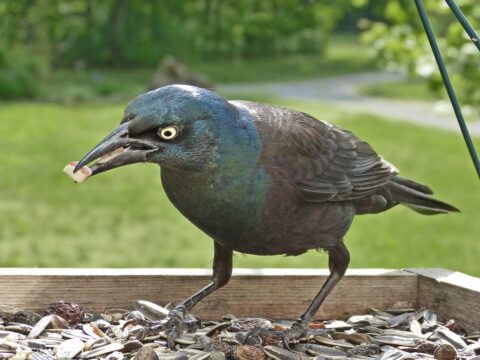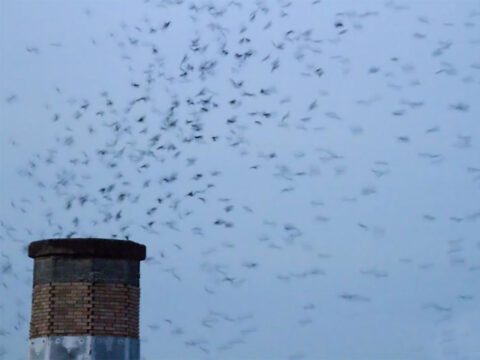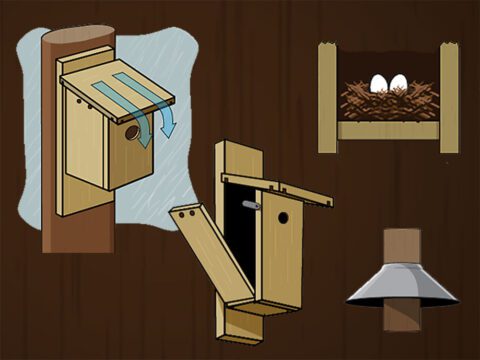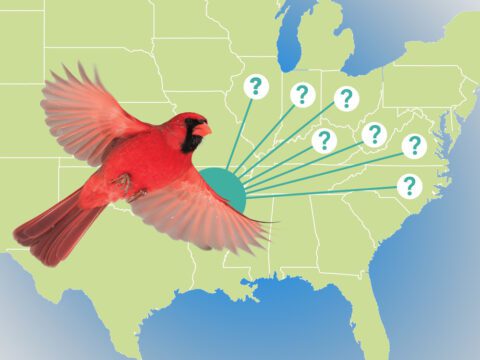Starting Over: Bird Watching in a New Backyard
By Mel White
April 15, 2009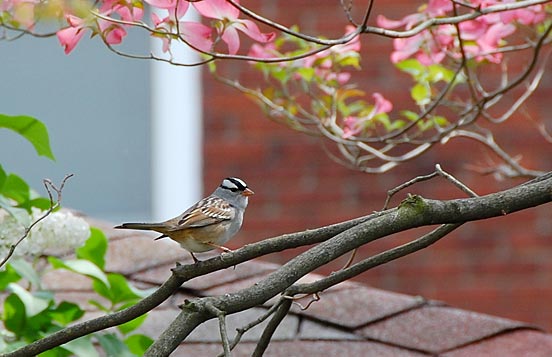
I sit here writing (i.e., mostly staring out the window and drinking tea) in a house in Little Rock where I have lived for 12 years and where I will no longer live by the time you read this. Boxes and boxes of books are stacked in the living room; I should throw many of them away, but I just don’t have the heart—and that in itself explains why moving is going to be much harder than it ought to be.
One of the two main reasons I bought this house was the vast, empty basement, which remains . . . vast. If you went down its dark, rickety steps, your first reaction would be to ask, “Why is that sinister, minor-key music playing?” Then you’d say “Eeeoouw!” followed immediately by, “What is all this junk?”
And I would say, “That’s not junk! That’s important stuff!” You’d pick up a dust-covered cord and ask, “What’s this?”
“That’s a spare power cable for my electric typewriter.”
“You use a typewriter?”
“Well, no. It quit working years ago. But that cable might fit something else someday.”
Why am I a pack rat? I’m a generally logical person in other ways. I know, factually, that I probably will never need the cute little plastic box that held the soap from that hotel in Switzerland. But it would be so handy if I ever went on vacation and needed to take . . . well, something soap-sized. Likewise, when I bought a new lawn sprinkler, why did I keep the crummy old one, which even when it was new had the irrigating power of an incontinent field mouse?
Last night I brought up from below and threw away probably 50 pounds of old bird magazines, and each one I tossed into the recycle bin caused a little shudder. I thought, What if I need this article on “Tips for Tricky ID Problems: Passenger Pigeon or Mourning Dove?” Okay, that issue was pretty old. Some people throw magazines away after a week. I still have magazines with stories like “How the Amazing ‘Jet’ Engine Will Revolutionize Travel!”
The other reason I bought this house is what I’m looking through as I drink my tea: a big window in the south wall of a room that I immediately recognized could be, and has been, my office. Because of the slope where this house is built, the view takes in just the roofs of the houses behind me. It’s partly gray shingles, but 90 percent leaves and sky.
The house sits in the small valley of Jimerson Creek, less than a mile from the Arkansas River, hemmed in by a big bluff to the north and a smaller bluff to the south. The habitat is essentially bottomland terrace, and through my office windows I can see shortleaf pine, eastern red cedar, black cherry, at least five species of oaks, God knows what kinds of hickories, pecan, sugarberry, sweetgum, sycamore, white ash, and a variety of exotics including some very big tulip trees. I have spent many, many hours watching the comings and goings in those trees.
It was obvious that this would be a good spot to hang up a few feeders and be entertained, as I worked, by the usual suspects, from Downy Woodpeckers to Carolina Chickadees to Northern Cardinals. I had no idea that after 12 years I would have 95 species on my yard list.
You scoff, those of you who live on a lake or coast and have seen 150 or 200 species from your yard. I think that 95 is pretty good for a smallish yard in a typical suburban neighborhood with houses all around. My birder friends in town have sometimes expressed a degree of astonishment at the stuff that’s shown up here. Least Flycatcher, Blue-headed Vireo, Blue-winged and Canada warblers, Scarlet Tanager—I’ll admit that those are things that could appear nearly anywhere during migration. But Prothonotary Warbler? Prairie Warbler? Worm-eating Warbler? Lincoln’s Sparrow? White-crowned Sparrow? Not to mention the frequency and numbers of birds such as Magnolia and Wilson’s warblers and American Redstart. I have to think my little valley serves as a funnel for birds migrating along the Arkansas River.
A couple of hundred yards away, Jimerson Creek flows through a gap in the big bluff where the slopes are too steep for houses, and there’s a wide swath of undeveloped, densely forested land contiguous with the river. That circumstance is responsible for the Great Horned Owls I hear hooting around Christmastime, the Chuck-will’s-widows calling in spring, and the pair of Red-tailed Hawks that soar on sunny days year-round. Every now and then, a Belted Kingfisher will fly up the creek, realize that the water’s gotten too shallow for fishing, give a loud rattle, and fly back to the Arkansas River.
Changes have occurred over the past decade-plus, even in this long-settled neighborhood. Cooper’s Hawks are now quite regular visitors to the yard, reflecting an overall increase in their year-round population. Same for Mississippi Kites, which, while not quite yard birds like Blue Jays or Northern Mockingbirds, have gotten so common in residential areas that they’re barely of note anymore.
Not so long ago, an Orange-crowned Warbler in midwinter was a pretty decent sighting around here. For years now, a single individual has spent the whole season in my yard, pecking the suet and snapping up bits of peanut.
On the other end of the abundance spectrum are a few mysteries: Why, in 12 years, has only one Hairy Woodpecker put in a single appearance? The species is far less common around here than is Downy, but still—just one? Not zero or three or six? The very same thing applies to Red-headed Woodpecker: one bird, one time. (Though I’ve kept hoping, no Pileated Woodpecker has ever flown over or given even a distant call.)
In 12 years, I’ve seen three Brown-headed Nuthatches, all within the range of January 19 to 27, in three different years. This is less a mystery than a lesson in habitat: the species is pretty common just a few miles south, where the Arkansas River bottomlands give way to the pine-dominated Ouachita Mountain foothills. In fact, the brown-heads I’ve seen in my yard were, at those three moments, quite possibly the northeasternmost individuals in Arkansas—just making a quick foray outside their territories before deciding that pinecones make better food than acorns. Something very similar happens when I find myself in a sushi restaurant.
Since I moved here, House Sparrows have almost completely disappeared from the immediate vicinity. Certainly they’re not rare elsewhere in town, so what’s the reason here? Competition from House Finches? Something to do with availability of loose wallboards and holes in eaves?
And speaking of junk birds: Why have Eurasian Collared-Doves been common for years just three miles away, in similar-looking neighborhoods, but remained completely unknown around here? What variables of habitat (elevation? lack of parking lots?) keep them as isolated as if there were a Streptopelia-proof fence through the middle of town?
But the biggest mystery of all has to do with the one appearance in the yard of a Blue-gray Gnatcatcher, a bird that’s not just common but abundant in all sorts of wooded habitats in central Arkansas. For 12 years I’ve been regularly running a four-mile route through the neighborhood, and I’ve never heard one—and then that single individual showed up once in my yard, on September 9, 2007. Is there something about the checkerboard of yards and houses that keeps gnatcatchers away, despite the variety and abundance of trees and shrubs? Does this species need uniformly unbroken woods to feel comfortable?
My last yard bird was a Philadelphia Vireo that showed up outside the window on October 15. I suppose something new could show up in these last six weeks, but even so, I’ll be leaving here short of the century mark.
My neighbors are too nice to say so, but I’ll bet some of them won’t be sad to see me gone. Part of the reason this yard has been good for birds is geography, but another reason is the way I’ve let it grow up into a shrubby, congested mess. There are plenty of places for White-throated Sparrows to hide, plenty of holly berries for Cedar Waxwings, plenty of saplings that attract bugs that attract warblers, plenty of knotholes for chickadees, titmice, and wrens.
I let a decaying old silver maple stand far too long because the woodpeckers loved it, and because it had a hole in the trunk that was right outside my window. A pair of Great Crested Flycatchers appeared one spring and inspected that cavity, and I could easily anthropomorphize a conversation between them about its suitability for a nest. They decided to pass on it, and throughout the summer I could hear them calling from somewhere down by the creek, where they must have found a nicer accommodation. (I imagined they thought the hole in my tree angled up too much and would let rain in, and I wondered, too late, what would have happened if I’d built a little canopy over it.) Later, a huge limb fell out of the maple in a windstorm, and it was an absolute miracle that it didn’t go right through my roof. Was it good karma from trying to be nice to my birds?
We’re buying a house from a couple who are exactly the kind of people you want to buy a house from: complete neat freaks. The place has been immaculately maintained, to the point of looking weirdly unlived-in. They have folders for every appliance, with warranties and service records. They have paint-matching samples and color-coded switches and backups for every system.
The problem is, their neatness extended to the yard, which is too perfect for birds. No untrimmed shrubs, no tangles of vines, no rotting old limbs in trees. This must be corrected, immediately. Vines and berry bushes to plant! A whole new batch of neighbors to irritate!
Another problem won’t be so easily fixed. I’m moving just over a mile and a half south, into the aforementioned Ouachita Mountain foothills—such a short distance, and such a big change in habitat. Hardwoods dominate around my old neighborhood, pines in the new one. The new place is higher, drier, less fecund-looking. There’s no way, I know, that I’m going to look out my new office window in spring and fall and see a parade of things such as Eastern Phoebe, White-eyed Vireo, Nashville, Chestnut-sided, and Wilson’s warblers, Northern Parula, Rose-breasted Grosbeak, and Baltimore Oriole—at least not nearly as regularly as I did at my old house.
Right now, in February, the sound of Pine Warblers is incessant at the new house. A couple of weeks ago I was standing in the driveway, heard squeaking, and looked up to see a flock of Brown-headed Nuthatches in an adjacent pine.
And yet, maybe I’m judging too quickly. The other day I met my next-door neighbor and we introduced ourselves. After a few minutes, apropos of absolutely nothing I’d said, he mentioned that he’d gotten interested in birds lately, enjoyed feeding them, and had joined the local birders’ list-serve.
“We’ve got good birds around here,” he said. “We’ve had Mississippi Kites nesting right over there”—pointing to the next yard east—“and last year a Green Heron showed up and hung out in my yard for a while. And unless I’m crazy, I think it actually tried to nest in those shrubs behind your house.”
I said good-bye to him, walked into the backyard, and scared up a Cooper’s Hawk that had been resting in an oak.
Maybe this place has potential after all.

All About Birds
is a free resource
Available for everyone,
funded by donors like you
American Kestrel by Blair Dudeck / Macaulay Library
